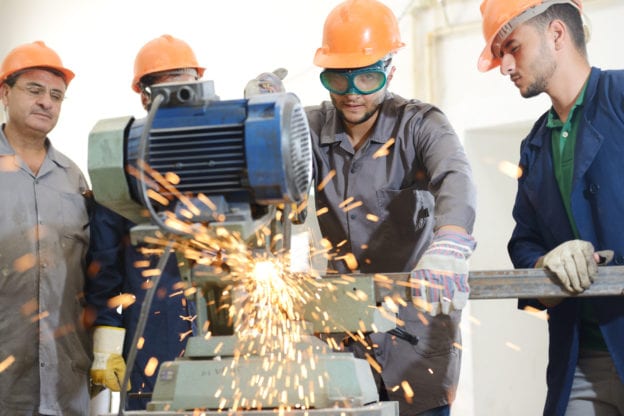The smart manufacturing (Industry 4.0) uses information technology and the best operating technologies to enhance global manufacturing. It aims at giving manufacturing companies quicker production and improved worker safety to bring more competition in market place. To remain economically viable, manufacturers must accelerate their manufacturing cycles. Smart manufacturing gives intelligent manufacturing solutions by focusing on cost reduction and efficiency. Let me walk you through the 6 trends in smart manufacturing industry;
1. Big data and cloud computing
Through cloud computing, manufacturers are able to transfer data from one point to another with ease. In addition, they can be able to respond to respond to customer issues much quicker. Similarly, they can access real-time data by collecting and retrieving important data. Secondly, it has become much easier to track materials and deliveries. Thirdly, cloud computing has also enabled digital decentralization of supply chain through optimized pricing and sourcing.
2. Distributed manufacturing
This is the use of digital technology to enhance manufacturing operations. Through distributed manufacturing, one can monitor all products and facilities making the manufacturing process more transparent. Further, products can be verified using a centralized technology. Through information technology, the new trend has made it possible to delegate tasks .On the other hand; it has helped in saving costs associated with communication and transportation. This gives room for faster new product introduction making the overall manufacturing process and distribution easier.
3. 3D printing/additive manufacturing
This is a game changer in the manufacturing industry. It has enabled the use of lightweight alloys and less material in manufacturing. The trend has addressed complex geometries thanks to rapid prototyping. Objects can be molded into infinite number of shapes. Secondly, one can manufacture objects with high strength. 3D printing has substituted other manufacturing technologies. In addition, one can draw ideas and test them without having to use the actual resources.
4. Modeling and simulation
Modeling and simulation has increased manufacturing efficiency. It has also reduced risks associated with manufacturing. A simulation-based approach in manufacturing has fundamentally helped to change the way products are designed increasing manufacturing speed and efficiency.
5. Virtual manufacturing
It aims to give flexible and agile production. It encompasses the resources and the process used in manufacturing. Due to the increased completion globally, it has become easier to take your product to the market through virtual manufacturing. This saves time in the planning process. Today, many manufacturers are taking advantage of the virtual landscape.
6. The emergence of `next shoring’
Manufacturing wages have gone high as well as the cost of operations. To accelerate time of meeting the consumer demands, many smart manufacturing companies are outsourcing overseas. Next shoring has enabled manufacturers increase their production speed to ensure consumers don’t replenish the products that are on the shelves. This has made it easier to move inventories to the consumers.
The trends in smart manufacturing have brought intelligent manufacturing solutions by enhancing the production process through the use of information and operation technology. The current trends involve simulation and modeling, capturing data, analysis of big data, cloud computing, controlling and planning. It’s exciting to see how smart manufacturing continues to evolve.
DO YOU KNOW WHERE TO START?
It’s not as difficult as you think, when you have the right partner. Download a free brochure NOW! Smart Manufacturing doesn’t have to be complicated.





